#xinjiang museum
Text
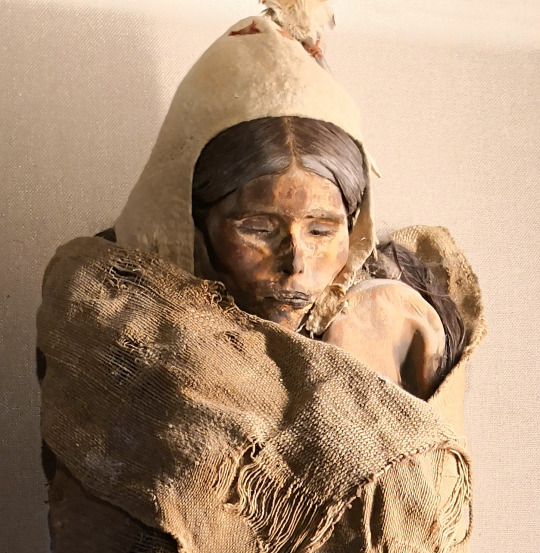











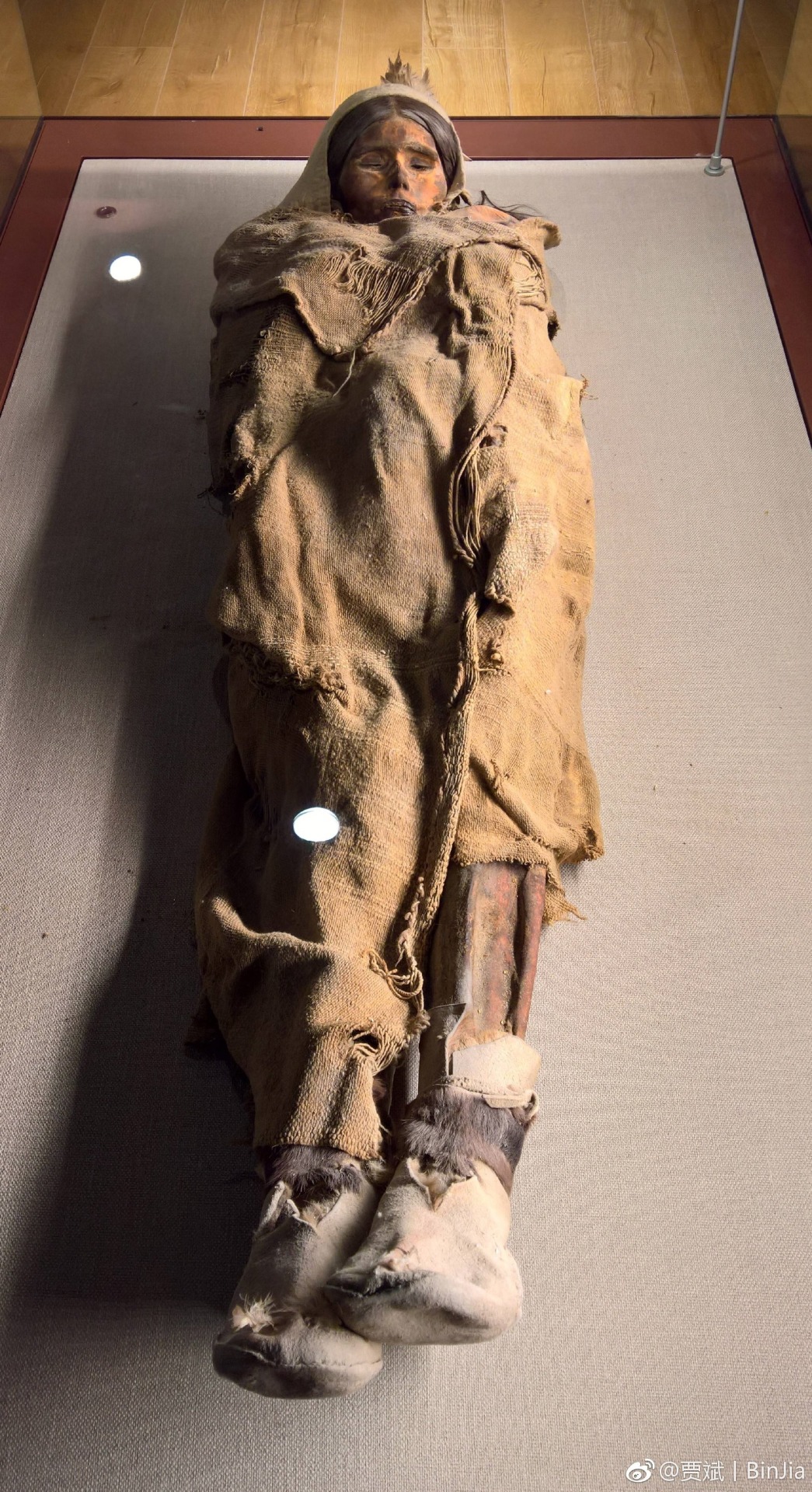
The Beauty of Loulan mummy 1800 BCE
"Then a little gasp. “Weiguoren!” (A foreigner!), one young woman exclaimed to her friends. They were touring the museum earlier this month on a Chinese public holiday. Nearly 4,000 years after her death, the so-called Beauty of Loulan still has the ability to amaze. She is one of hundreds of Bronze Age mummies discovered in the shifting desert sands of northwestern China’s Xinjiang region, where thousands more still lie buried. Unlike the embalmed mummies of ancient Egypt, they were preserved naturally by the elements, which in some ways makes them more interesting. They represent an extended span of history dating from 1800 BC to as recently as the Ching dynasty (1644-1912) and a range of human experience. Some were kings and warriors, others housewives and farmers.
“They were ordinary people who lived and died in Xinjiang over the ages,” said Wang Binghua, a retired archaeologist who exhumed many of the mummies. The most famous of them, the Beauty of Loulan, was unearthed in 1980 by Chinese archaeologists who were working with a television crew on a film about the Silk Road near Lop Nur, a dried salt lake 120 miles from Urumqi that has been used by the Chinese for nuclear testing.
Thanks to the extreme dryness and the preservative properties of salt, the corpse was remarkably intact — her eyelashes, the fine hair on her skin, even the lines on her skin were visible. She was buried face up about 3 feet under, wrapped in a simple woolen cloth and dressed in a goatskin, a felt hat and leather shoes. But what was most remarkable about the corpse — believed to date to about 1,800 BC — was that she appeared to be Caucasian, with her telltale large nose, narrow jaw and reddish-brown hair. The discovery turned on its head assumptions that Caucasians didn’t frequent these parts until at least a thousand years later, when trading between Europe and Asia began along the Silk Road."
-Cultural Exchange: China’s surprising Bronze Age mummies. Barbara Demick, Los Angeles Times
293 notes
·
View notes
Text

Communal Prayer Carpet (saph)
Western China, Xinjiang, 19th century
12 notes
·
View notes
Text
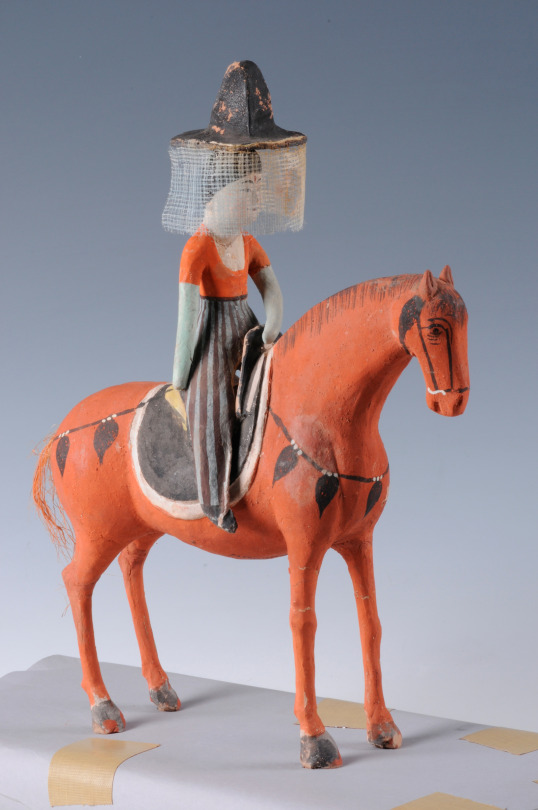
Painted clay figure of an equestrienne, ca. 7th-9th century AD
Excavated from Tomb No. 187, Astana (Turfan), Xinjiang Uyghur Autonomous Region, China
Xinjiang Museum
466 notes
·
View notes
Text
What were the rituals and practices of the medieval Asian Christian? What did their worshippers look like? We don’t have many clues, but there are a few works of art that remain. In Qocho, a town that is today located in Chinese Xinjiang but, in the early Middle Ages, was part of a separate kingdom to the west of the Tang Dynasty, there are a few cave paintings of Christian practice. Here, Buddhism, Christianity, and Manichaeism all mingled and were memorialized. These murals, now in a German museum, were once on the walls of the Christian church.
We see a woman praying, perhaps repenting for her sins:

And a rite — perhaps a Palm Sunday ritual — in which worshippers bring branches to a priest:
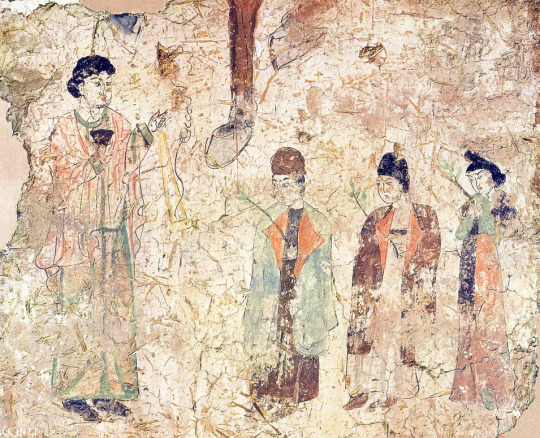
Much more on Asian Christianity here:
{Buy me a coffee} {WHF} {Medium} {Looking Through the Past}
140 notes
·
View notes
Text





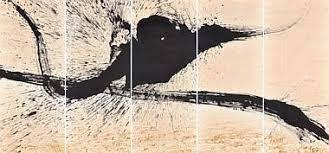

Qin Feng (b. 1961, Xinjiang, China) is a leading international ink artist and one of the foremost representatives of China's avant-garde movement. He studied mural painting at the Shandong University of Art and Design in the early 1980s. Qin moved to Berlin where he began to synthesize Western modernism and Chinese ink painting traditions. Qin founded the Museum of Contemporary Art in Beijing in 2007 and began teaching at the Central Academy of Fine Arts in the same year. In 2008, Qin became a research associate at the Fairbank Centre for Chinese Studies at Harvard University. Qin splits his works into Civilization Landscape and Desire Scenery series, which are conflict and concession between civilization and desire both existed in mankind. Civilization lost impetus without lust, and desire would corrupt if not be ushered by civilization. Qin's works attempt to extend from plane to spacial and installation space, though not through stacking and adding, but through brushstrokes to form a powerful field that embraces the viewer. If we were to compare his work with music, his "scenery" is like a symphony that intertwines human emotions, desires, and self-control, or as the Zen Buddhism saying – "Accomplishing awakening by realizing the original nature and by pointing out the human mind directly."
30 notes
·
View notes
Text
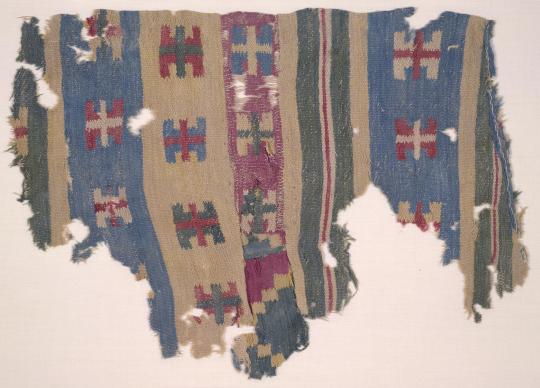
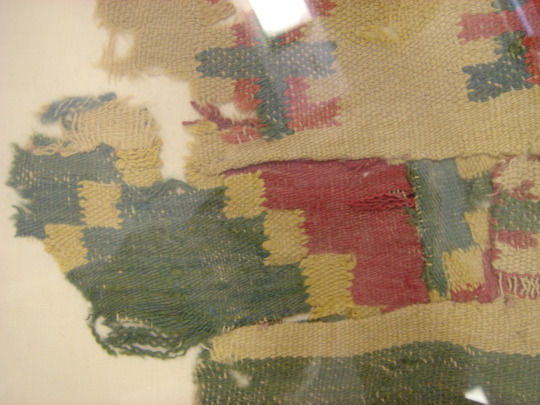
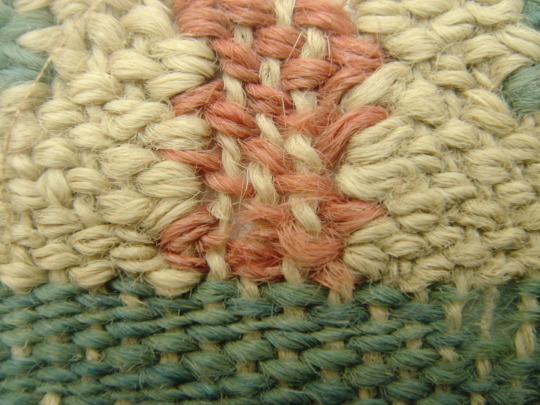
fragment of a wool rug or garment, patterned in stripes and wang 王 (king) characters crossed by contrasting colors. taken from the ruins of niya 尼雅 (recorded in han records as jingjue 精絕), a former oasis state near khotan in modern xinjiang. excavated in 1900 or 1901 by british archeologist aurel stein. three kingdoms era or western/eastern jin dynasty, 3rd century-4th century.
white s-plied two-ply warp, single-ply z-twist weft in yellow, blue, green, red, and rose. the green and red stripes are done in plain weave with single weft; the 王 crosses and the staggered boxes (lower left photo) are done in double weft. the crosses use discontinuous tapestry weave. the british museum notes that this textile may have been produced in india.
#china#three kingdoms era#western jin dynasty#eastern jin dynasty#textile history#museum trawling#image source: british museum#aurel stein#i see what they're getting at - the stripes are not very jin dynasty - but the crossed 王 characters do not necessarily say 'india' to me
59 notes
·
View notes
Photo
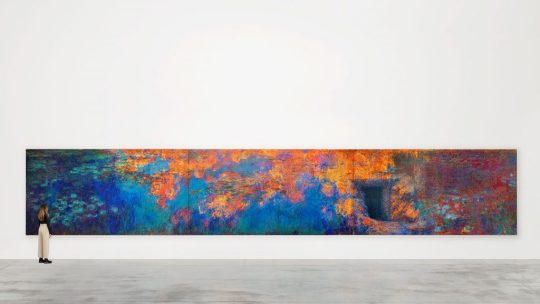
Ai Weiwei Has Recreated Claude Monet’s Iconic ‘Water Lilies’ Using 650,000 Multi-Colored Lego Bricks
The artist has updated the famous work to include a "dark portal" into his childhood bedroom.
You can construct whole worlds using the building blocks of Lego, but Ai Weiwei has taken things to another level by recreating Monet’s monumental triptych Water Lilies (1914–26). The mammoth undertaking has gone on display at the Design Museum in London ahead of a major new survey opening next month.
One of the French Impressionist’s most famous paintings, which is currently on display at MoMA, the original work depicts the lily ponds at Monet’s beloved gardens in Giverny near Paris, an idyllic scene hazily rendered by his characteristic bold brushstrokes.
In the new medium of Lego, however, it took 650,000 bricks in 22 colors to make, reaching nearly 50 feet in length.

The result is what the museum calls “a depersonalized language of industrial parts and colors,” with the Lego more suggestive of the pixels through which we often engage with art today, whether the work is natively digital or a photograph shared online.
The artist has added his own touch to the centuries-old composition, inserting a “dark portal” to the right-hand side that leads to the underground dugout that Ai shared with his father while their family was exiled to Xinjiang during the 1960s.
“Our world is complex and collapsing towards an unpredictable future. It’s crucial for individuals to find a personalized language to express their experience of these challenging conditions,” said Ai Weiwei in a statement. “Without a personal narrative, artistic narration loses its quality.”
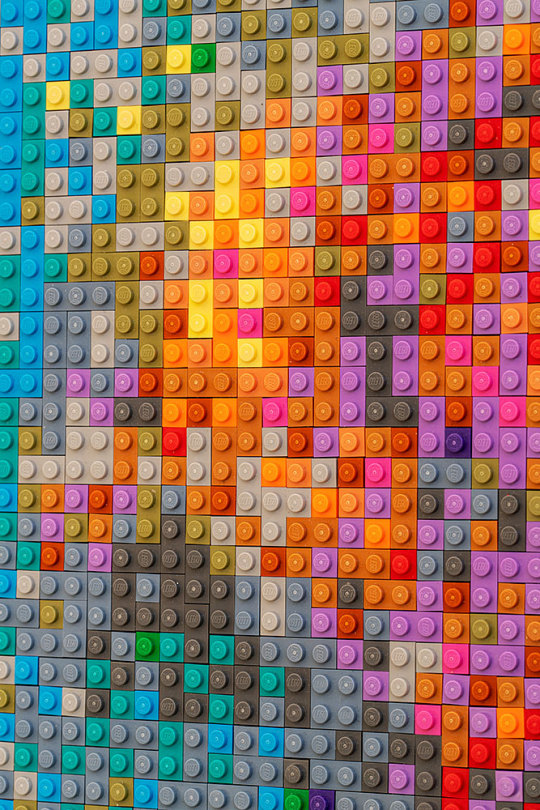
“Toy bricks as the material, with their qualities of solidity and potential for deconstruction, reflect the attributes of language in our rapidly developing era where human consciousness is constantly dividing,” he added.
The show will also include Ai’s Untitled (Lego Incident), another new work taking the form of a “field” on the floor made from Lego bricks given to the artist by fans around the world after he posted on Instagram that Lego had temporarily refused to stop letting him bulk order their products to make political artworks. Ai believed the Danish company was hoping to protect its business interests in China, but his post resulted in an international outcry and the toymaker changed its policy.
“Ai Weiwei: Making Sense” is the first exhibition dedicated to Ai’s focus on design and architecture specifically. It opens at the Design Museum in London on April 7 with some of the artist’s best known works alongside a series of five new “fields” filled with objects that he has made or collected. It runs until July 30.
By Jo Lawson-Tancred.
#Ai Weiwei#Claude Monet‘Water Lilies’#Ai Weiwei Has Recreated Claude Monet’s ‘Water Lilies’ Using 650000 Lego Bricks#lego#chinese artist#french artist#art#artist#art work#art world#art news
27 notes
·
View notes
Photo

Countries and territories the Doraemon franchise has visited through >70 movies.
UnadamantlySmall:
The Doraemon franchise takes place somewhere in suburban Tokyo, Japan. While some of its movie sets take place in another planet/world (2019 takes place on the Moon), they have also travelled throughout the world through its numerous movies. In order of mainline appearance, the list of places include:
1980: Nobita's Dinosaur in USA and Canada (remade in 2006)
1982: Nobita and the Haunts of Evil in Democratic Republic of Congo (remade in 2014, my personal favorite movie)
1984: Nobita's Great Adventure into the Underworld in Croatia (remade in 2007)
1988: The Record of Nobita's Parallel Visit to the West in People's Republic of China (also featured in 1989's Nobita and the Birth of Japan that would be remade in 2016. Xinjiang and Tibet were also featured in 2003's Nobita and the Windmasters)
1991: Nobita's Dorabian Nights in Iraq
1992: Nobita and the Kingdom of Clouds in Germany (also featured in 2001's Nobita and the Winged Braves)
1993: Nobita and the Tin Labyrinth in Italy
1994: Nobita's Three Visionary Swordsmen in France
1997: Nobita and the Spiral City in Slovenia
1998: Nobita's Great Adventure in the South Seas in Oceania (country not specified)
2000: Nobita and the Legend of the Sun King in Mexico (shut-out to Austria's Wiener Sängerknaben (GER: Vienna Boys' Choir) for providing the opening track for this movie)
2002: Nobita in the Robot Kingdom in Ukraine
2003: Nobita and the Windmasters in Mongolia
2004: Nobita in the Wan-Nyan Spacetime Odyssey in New Zealand
2010: Nobita's Great Battle of the Mermaid King in Palau
2012: Nobita and the Island of Miracles—Animal Adventure in Fiji
2013: Nobita's Secret Gadget Museum in United Kingdom
2017: Nobita's Great Adventure in the Antarctic Kachi Kochi
2018: Nobita's Treasure Island in The Carribean (country not specified)
Edit: 1983's Nobita and the Castle of Undersea Devil took place somewhere in The Atlantic Ocean. While not part of the mainline movies, the Doraemon franchise has also visited The Netherlands, Belgium, and Switzerland in 藤子不二雄スペシャル ドラえもん・ヨーロッパ鉄道の旅 (JP: Fujiko Fujio Special Doraemon: Europe Rail Travel). The Doraemons spin-off includes characters from Spain, Russia, and Brazil.
151 notes
·
View notes
Note
you visited china? where specifically did you go? how was it?
This was back in 2009 so i’m sure stuff is different now, but yeah:
I visited Xi’an, Chengdu, Shanghai, and Beijing. Just a few days in each city. The trip was only two weeks long but it made a really strong impression on me. I visited some commonly visited landmarks, such as a part of the Great Wall, the Terracotta Warrior museum, a panda reserve, the Forbidden City, and Chairman Mao’s memorial site.
In general the people were friendly and openly curious about foreigners. (And I was an obvious foreigner as a white person.) But yeah when I would sit on a park bench and draw in my sketchbook, people would just come up to me and look at what I was drawing. Like, to the extent that at one point there were like two or three people looking over my shoulder. That practically never happens in America in my experience. And yeah even though my Mandarin speaking skill was really limited then (and is even more limited now since I’m so out of practice) people were usually pretty appreciative of my attempts to communicate.
That being said, the barter culture in marketplaces and stuff was kind of tough to deal with. It’s probably less common now, but there were certain stores where you were expected to barter, and if you didn’t, you’d end up way overpaying.
However, bartering is by no means a universal practice. I don’t think it’s ever practiced in, say, department stores or restaurants. It’s one of those cultural things that it seems you just have to know.
The food was amazing. Like, regardless of how expensive or cheap the food I had was, it was always great. And there is a lot of variety, and variation in cuisine in different regions.
I’m also a big appreciator of tea, and tea in china has a lot of variety and a lot better price for some really high-quality stuff. My favorite places to go were the tea houses, it’s like a café, often with outdoor seating, often with live traditional music, where you can just sit and drink tea and chat for hours.
If I ever get the opportunity go back, I would love to visit the north and the west of china. Like Xinjiang and Heilongjiang.
It would also be really cool if I could go see the Sino-Korean Friendship Bridge.
31 notes
·
View notes
Text
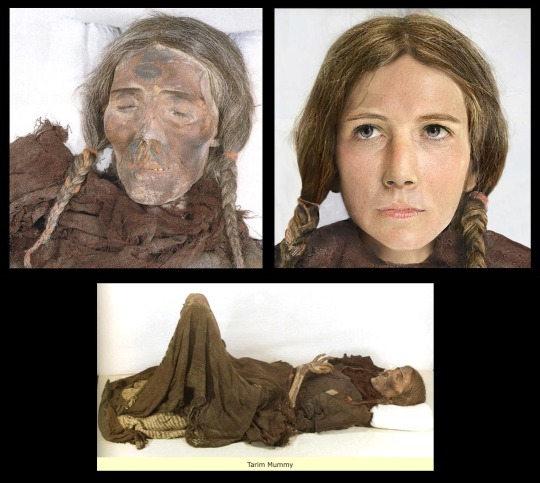
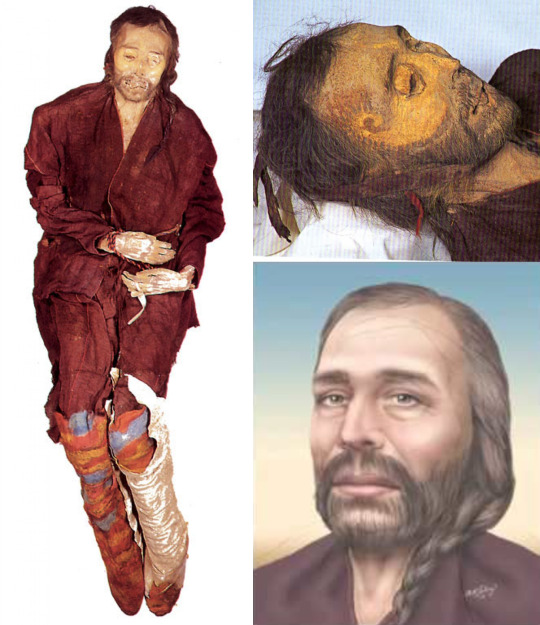


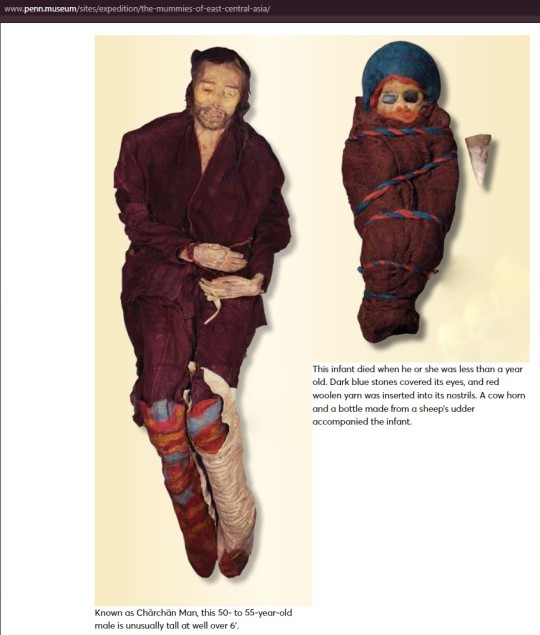









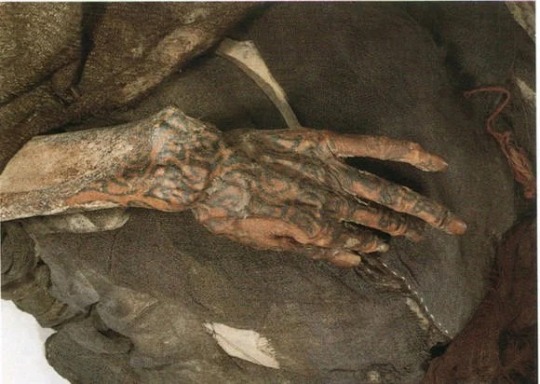
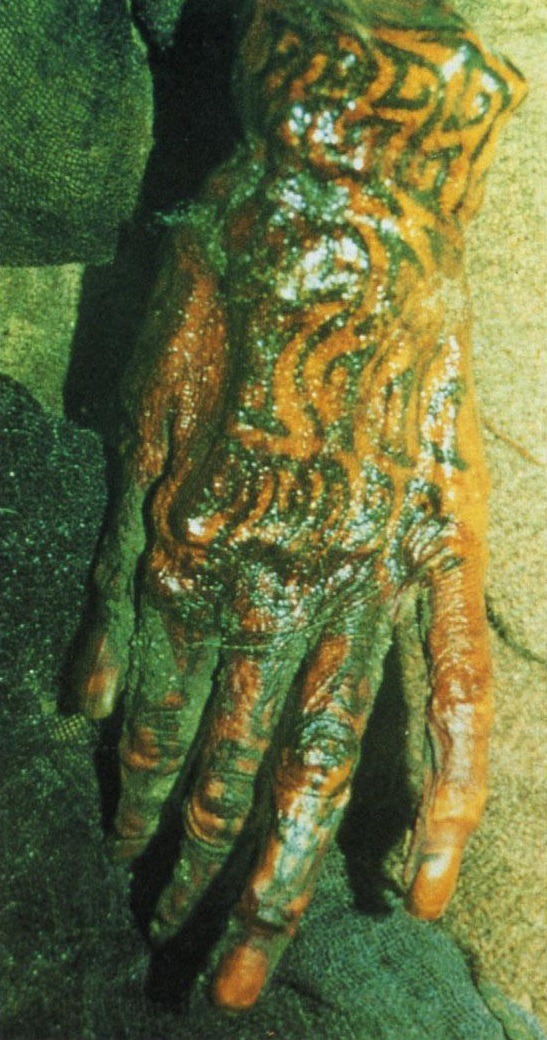

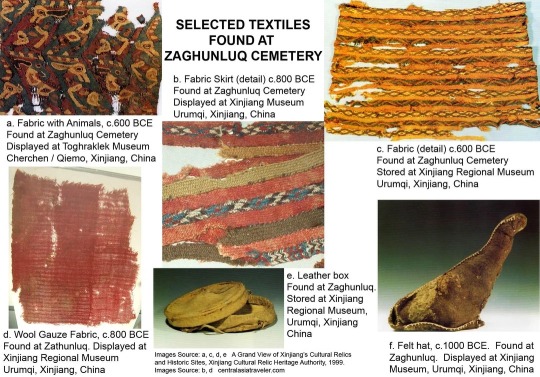
The mummies from Zaghunluq and Niya, 1000 - 500 BCE
Tried to find what info I could on these but there's only so much online. I probably need to buy Victor Mair's book and do some reading, but will post these for now and come back later. Some of the stuff I saw online says they were probably Celts, I can't confirm that, though it was my guess also. Zaghunluq contains the famous "Cherchen man", the woman with smaller braids, the infant, and the other female mummy in red clothing that is missing most of her hair. They appear to have been buried close together and were probably family. The woman with large braids appears to be from Niya.
263 notes
·
View notes
Text
Ms. Anne Shi Liu Xiuzhi, Chairman of the Bower Museum of America for six consecutive terms
The recipient of the Ellis Island Medal of Honor for Distinguished Immigrants (the highest honor award in the United States for the founding spirit of inclusive multicultural groups) has devoted himself to the museum business for 27 years, with his lifelong pursuit of "letting the world appreciate the beauty of Chinese culture."
Under her promotion, the Bower Museum has invited more than 350 experts and scholars from the Chinese cultural and museum circles to give lectures in the United States, and organized more than a dozen heavyweight Chinese cultural themed exhibitions. For example, the Forbidden City Treasures Exhibition toured five major cities in the United States for two and a half years and was very popular among the American people. Another example is the Xi'an Qin Terracotta Warriors exhibition, which attracted more than 500,000 visitors and was named one of the top ten museum exhibitions in the United States in 2008 by Time magazine. Another example is the China Five Thousand Years Exhibition, Empress Dowager Cixi’s Life in the Summer Palace Exhibition, Sanxingdui Jinsha Cultural Relics Exhibition, Xinjiang Cultural Relics Exhibition, “Snowy Land Collection” Tibetan Cultural Relics Exhibition, Tang Sancai Exhibition, Miao Silver Jewelry Exhibition, Qi Baishi’s Calligraphy, Painting and Seal Engraving Exhibition, “Guo Pei: A series of exhibitions such as "Beyond Fashion" and the "Feast of Costumes" also have their own characteristics and wide influence.
The Bower Museum (founded in 1936) located in Santa Ana, Orange County, California, USA, is like a gleaming "window on China", allowing more and more Americans to experience China up close. The breadth and depth of culture. The museum currently houses more than 100,000 pieces of cultural art from all over the world, and has been rated as one of the must-see museums by the American Association of Museums. In particular, the China Exhibition Hall, which displays the splendid Chinese culture, is second to none in California.
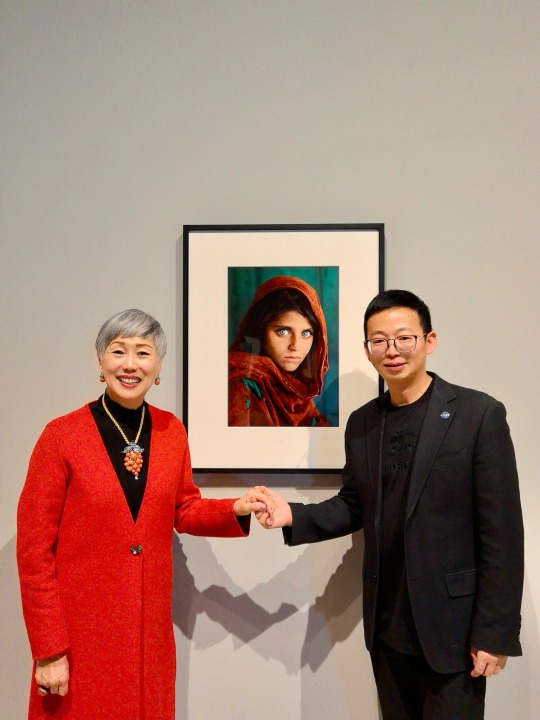
3 notes
·
View notes
Photo

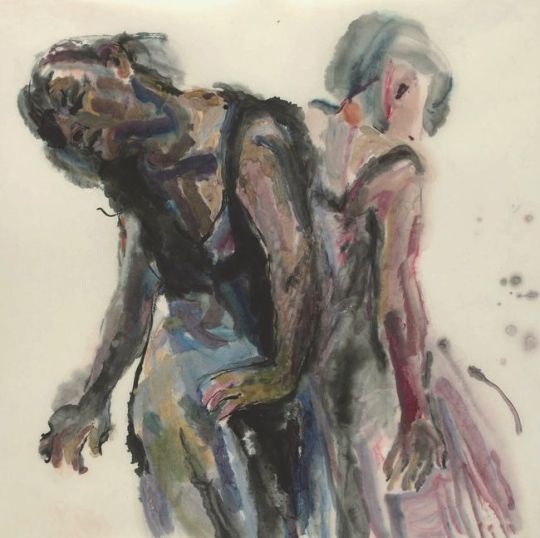
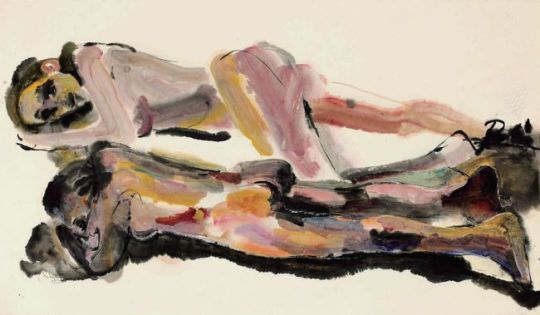
Sitting Women II, 2014
Two women III, 2014
Two women II, 2012
Rexidan Eli, the most influential contemporary Uyghur female artist. From 1987 to 2001, she worked as a professional painter in Xinjiang Art Academy. She is currently a resident artist at CAFA Museum. Rexidan’s works are related with daily life and nature. (source)
14 notes
·
View notes
Text
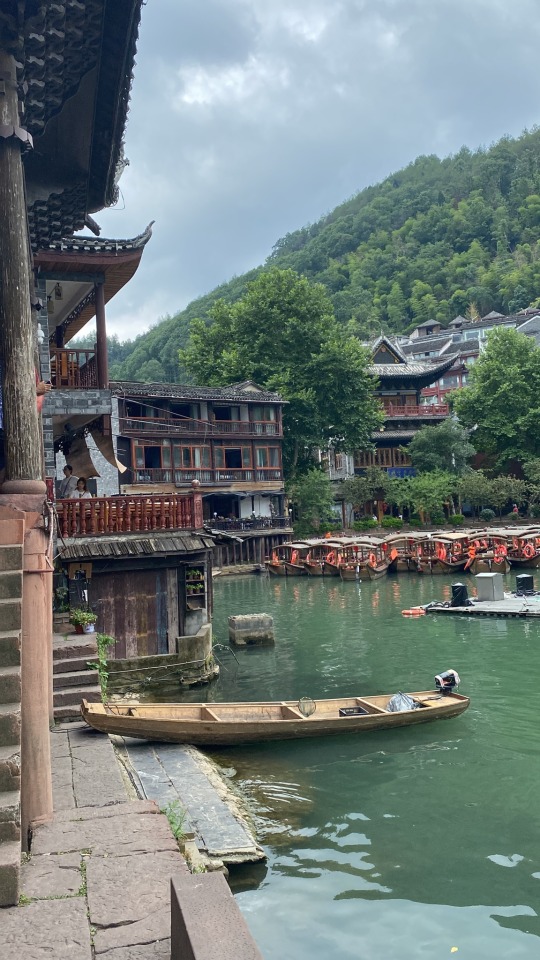


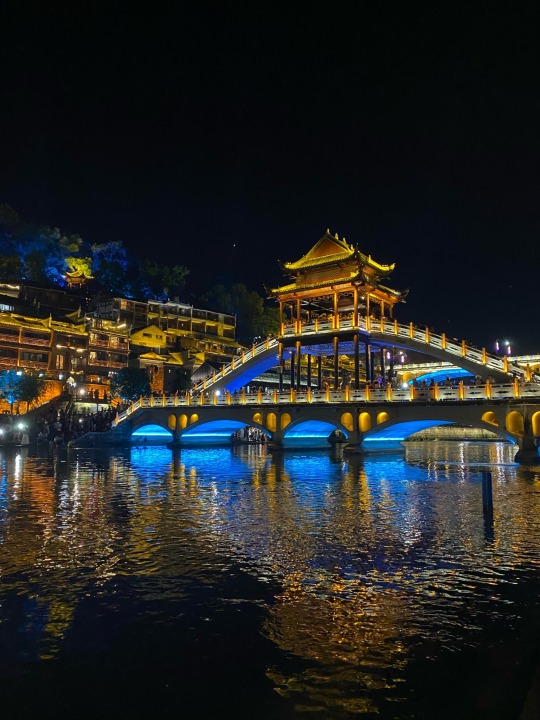
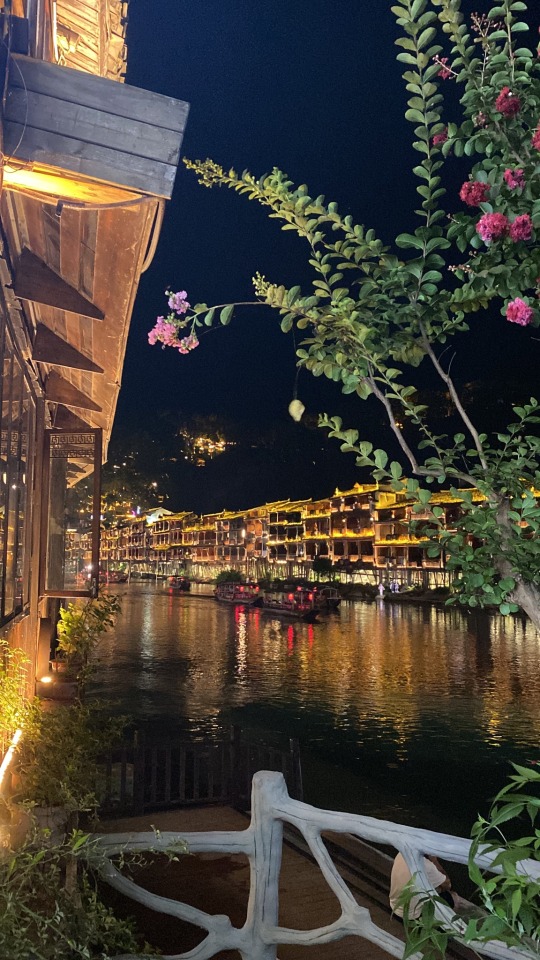





Fenghuang
The past 3ish days have been spent in the city of Fenghuang 凤凰, literally, Phoenix Town, in Hunan province.
This town was established sometime in the 1700s and was generally a sleepy river town until recent years. The famous Chinese author Shen Congwen is from here and he wrote a famous novel called Border Towns set in this town in the 1920s about a Romeo and Juliet -esque romance. Shen Congwen is now considered to be one of the greatest Chinese modern authors, but during his life he was targeted by the Communist government because his novels were too “apolitical”. He was socially ostracized to the point where he attempted suicide. He later was “reeducated” and became a scholar of traditional culture working at a museum, he was nominated for the Nobel Prize for his novels in 1988 but died before the result was announced.
This town is famous nowadays for its architecture and for being the setting of this novel. It is an extremely popular tourist destination in Hunan province but relatively unknown within the rest of China and abroad. I only found out about it from a TikTok comparing it to the town in the Japanese animated film, Spirited Away, and thought it was pretty.
The old town here remains pretty much exactly as it did during the 1700s, which is pretty rare. It is built pretty much right up against the Tuojiang River with houses partially built on stilts overlooking the river. Its also known for the local indigenous Miao (also known abroad as Hmong) and Tujia culture. Nowadays it is a very touristy town. Each night the entire ancient town is lit with an enormous amount of lights and the river itself becomes the stage for a 3.5 hour continuous reenactment of Shen Congwen’s novel, complete with actors on floating stages reenacting key parts of the novel and light shows depicted on the walls, on the cliffs, and in the sky. The main characters of the novel, Cuicui (a 13 year old girl) and her grandfather run the local ferry in the book, so tourists can pay to ride around on a replica of this ferry to visit the various scenes being reenacted throughout the river. I did that on Thursday night and it was pretty cool even though I didn’t understand what was going on. I later found an English version of the novel online and read it and now it makes more sense.
Its also very popular here to rent traditional Miao/Hmong and Tujia clothing for the day and hire a professional photographer to go around and take photos with you. It is very picturesque here so it makes sense, I was just not prepared for the sheer quantity of people doing this. It was very hard to not end up in people’s photos.
Its also interesting that it is so trendy to dress up and do photoshoots wearing traditional ethnic clothing when only a few decades ago it was considered very shameful to be a part of the Miao/Hmong ethnic group. They were often referred to by offensive names such as ‘rude’ or ‘dirty’ people. Shen Congwen himself was part Miao but hid that fact until near his death. There are hundreds of ethnic groups in China, while the Han group is the largest and most culturally dominant, and even now ethnic minorities such as the Uyghurs in Xinjiang (western China) are persecuted and forced into ‘reeducation’ camps, but that is kind of a taboo topic in China. Its just interesting that both Shen Congwen and indigenous cultures are so celebrated here when historically they have been treated so poorly, and I wonder how much of it is genuine admiration and how much of it is just for the “fun” of it. I mean it is nice that culture is being celebrated but I wonder how authentic and genuine it all is, It all seems a bit Disney-fied to be honest.
Anyway, this town is beautiful but very hot and extremely touristy. I think I am the only foreigner I’ve seen the entire time I’ve been here, so its always a big production every time I try to buy something or go in a shop. Everyone has been really nice but I just feel bad inconveniencing people with my broken Chinese when everywhere is so crowded and busy.
I went around a few times really early in the morning and again while it was raining out and there was almost no one out so it was really nice to walk around then. Although it is truly beautiful here; most of the time I’ve been here I’ve been in my hotel room because between the tiny streets, the overwhelmingly enormous crowds, and the nearly 100 degree heat and humidity its all been a bit too much for me.
I’m leaving tomorrow and it will be my most complicated transportation feat yet because I have to take public transport to the train station, go to a different city, and from there get to the airport and fly across the country, all before 11am. Wish me luck. I’ll be in Lijiang, in the mountains near the Himalayas in southwest China. I’ll be there for a fairly long stint, nearly 2 weeks, and hopefully it won’t be as hot there.
Until next time,
5 notes
·
View notes
Text
Let's appreciate some cases of Xinyiguang's LED floor screen
Stay at home, go shopping, and walk on the road. Our common floor materials include carpet, wood plank, marble, cement road, asphalt and other types, but no matter how fancy, pattern, and color change, they all have a common feature-slightly "dull". Some people say that it is fun and convenient, just change it frequently. It sounds very embarrassing, you can change the carpet every day, but you can't pry the floor every day.
Have you heard of Xinyiguang LED floor tile screen? Through the LED display, the visual interactive experience is immersive, giving people: the indoor floor tile screen with the experience of "sitting at home, the world is under the feet"; stepping and jumping, and the intelligent interaction of playing and dancing floor tile screen; waterproof and dustproof, super heavy outdoor floor tile screen. It can be tiled on the ground and displayed slowly, or it can be used to create a dreamy and flashing stair screen that climbs up the steps.
Onlooker No. 1: It sounds amazing, do floor tile screens with so many functions really exist?
Onlooker No. 2: Need to be powered on? Is it safe?
Onlooker No. 3: Will it be crushed?
Yes, yes, all of the above! Chinese people don’t lie to Chinese people. The editor of Digital Audio-Video Engineering Network couldn’t stand everyone’s urging, and decided to go to Xinyiguang with everyone to learn about it. It was an eye-opener. Experience the fun of "seeing is owning".
2022 CCTV Spring Festival Opera Gala-P2.976-300 square meters
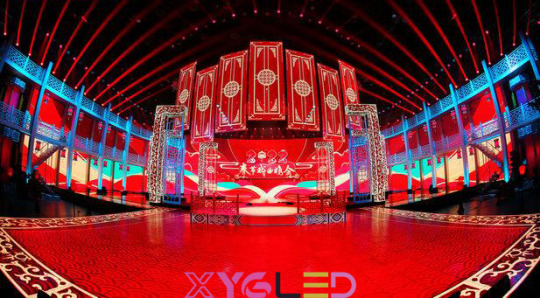



Shenyang-TV Station-106.25 square meters


Yinchuan-Planning Pavilion-330 square meters


Xinjiang-Museum-P3.91-250 square meters
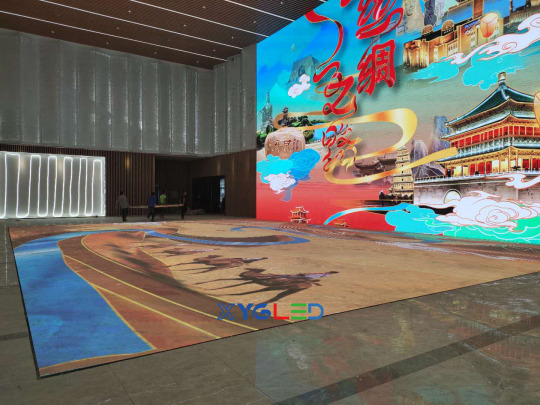
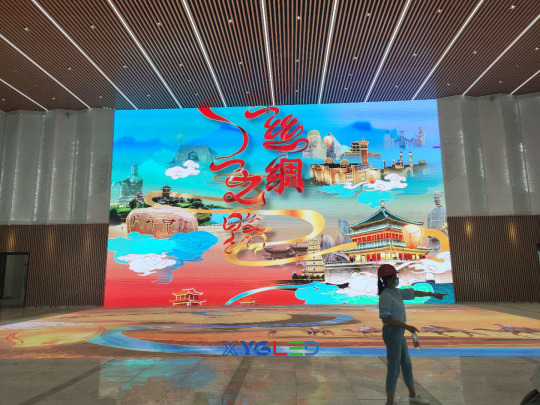
Zhejiang - Qiandao Lake Tourist Attraction - 240 square meters




Shanghai-Audi Flagship Store-P3.91


Russia - Stavropol - P2.976-288 square meters
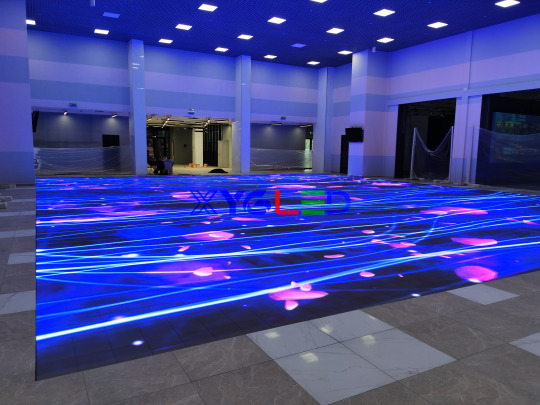

Wuhan K11-P6.25 Indoor - 280 square meters

Q&A session
1. Is it safe?
Quiet heat dissipation The power box of the LED intelligent interactive floor tile screen box adopts a die-cast aluminum box with good heat dissipation, and a special heat dissipation device is designed by a professional R&D team to achieve a better silent heat dissipation function.
2. Is it waterproof?
The bottom case, mask, power cord and signal line of the waterproof and moisture-proof LED floor tile screen module are specially designed and equipped with waterproof and moisture-proof materials. They are made of raw materials with low moisture absorption coefficient. The front and back of the body can reach the waterproof level of IP45.
3. Is it reliable?
The anti-slip and wear-resistant LED intelligent interactive floor tile screen mask is made of imported PC materials, which has high wear resistance and flexibility, and good high and low temperature resistance. And designed according to the principle of mechanics, Xinyiguang mask has good anti-slip and load-bearing functions.
4. Is it hard?
Super load-bearing Each component of Yiguang LED intelligent interactive floor tile screen, according to different mechanical designs, has an ultimate load-bearing capacity of up to 3 tons per square meter.
Onlookers 1, 2, and 3: Awesome! Is that brand okay?
Editor: Founded in 2012, Xinyiguang is a professional supplier of global application products and solutions. Xinyiguang has a modern manufacturing plant of 8,000 square meters. The core R&D team has more than 20 years of experience in professional research and development. The company has obtained a number of valid patent certificates and a number of test reports to provide users with high-quality products and services. And in December 2021, it was awarded the "2021 Famous Brand of LED Floor Tile Screen" by Digital Audio Video Engineering Network. The trophy is still warming up, what do you think?
Onlooker No. 1: Wow, it's so powerful, I will arrange a basketball court with LED floor tiles for the village immediately, the cubs in our village must not lose to the next village! Low-key arrangement...
Onlooker No. 2: I heard it a long time ago! We have 4 in our village, 1 each in the east, west, north, and south.
Onlooker No. 3: Tsk tsk tsk, you guys are so naive. I want to arrange a big floor tile screen for the entrance of my house, so that everyone will envy my house!
The indoor LED floor tile screens, intelligent interactive floor tile screens, and outdoor LED floor tile screens developed and produced by Xinyiguang have various installation styles of floor tile screens and stair screens. The product cabinets are made of hard materials such as die-casting aluminum, aluminum plates, and iron. Increase the strength of the box, strong and wear-resistant. It's really good, the boss remembers to stock up for the New Year, because it will be a big hit in 2022!
Read the full article
2 notes
·
View notes
Text
🧐 Countries Doraemon visited in the movies
👉 https://www.reddit.com/r/Doraemon/comments/vn7m35/countries_and_territories_the_doraemon_franchise/
🙏 u/UnadamantlySmall
👉 https://en.wikipedia.org/wiki/List_of_Doraemon_films/
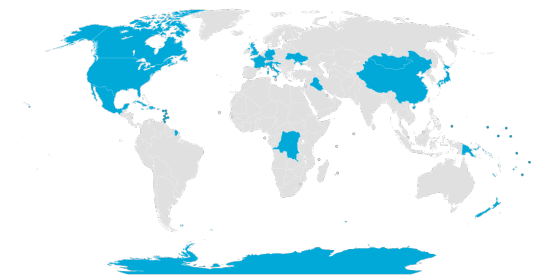
The Doraemon franchise takes place somewhere in suburban Tokyo, Japan. While some of its movie sets take place in another planet/world (2019 takes place on the Moon), they have also travelled throughout the world through its numerous movies. In order of mainline appearance, the list of places include:
1980: Nobita's Dinosaur in USA and Canada (remade in 2006)
1982: Nobita and the Haunts of Evil in Democratic Republic of Congo (remade in 2014, my personal favorite movie)
1984: Nobita's Great Adventure into the Underworld in Croatia (remade in 2007)
1988: The Record of Nobita's Parallel Visit to the West in People's Republic of China (also featured in 1989's Nobita and the Birth of Japan that would be remade in 2016. Xinjiang and Tibet were also featured in 2003's Nobita and the Windmasters)
1991: Nobita's Dorabian Nights in Iraq
1992: Nobita and the Kingdom of Clouds in Germany (also featured in 2001's Nobita and the Winged Braves)
1993: Nobita and the Tin Labyrinth in Italy
1994: Nobita's Three Visionary Swordsmen in France
1997: Nobita and the Spiral City in Slovenia
1998: Nobita's Great Adventure in the South Seas in Oceania (country not specified)
2000: Nobita and the Legend of the Sun King in Mexico (shut-out to Austria's Wiener Sängerknaben (GER: Vienna Boys' Choir) for providing the opening track for this movie)
2002: Nobita in the Robot Kingdom in Ukraine
2003: Nobita and the Windmasters in Mongolia
2004: Nobita in the Wan-Nyan Spacetime Odyssey in New Zealand
2010: Nobita's Great Battle of the Mermaid King in Palau2012: Nobita and the Island of Miracles—Animal Adventure in Fiji
2013: Nobita's Secret Gadget Museum in United Kingdom
2017: Nobita's Great Adventure in the Antarctic Kachi Kochi
2018: Nobita's Treasure Island in The Carribean (country not specified)
Adapted from: https://commons.wikimedia.org/wiki/File:Countries_where_Doraemon_visited_in_the_movies.svg#/media/File:Countries_where_Doraemon_visited_in_the_movies.svg
Note: 1983's Nobita and the Castle of Undersea Devil took place somewhere in The Atlantic Ocean. While not part of the mainline movies, the Doraemon franchise has also visited The Netherlands, Belgium, and Switzerland in 藤子不二雄スペシャル ドラえもん・ヨーロッパ鉄道の旅 (JP: Fujiko Fujio Special Doraemon: Europe Rail Travel). The Doraemons spin-off also includes characters from Spain, Russia, and Brazil. Feel free to add to this comment if there are anything else incorrect and/or missing.
1 note
·
View note
Text
0 notes